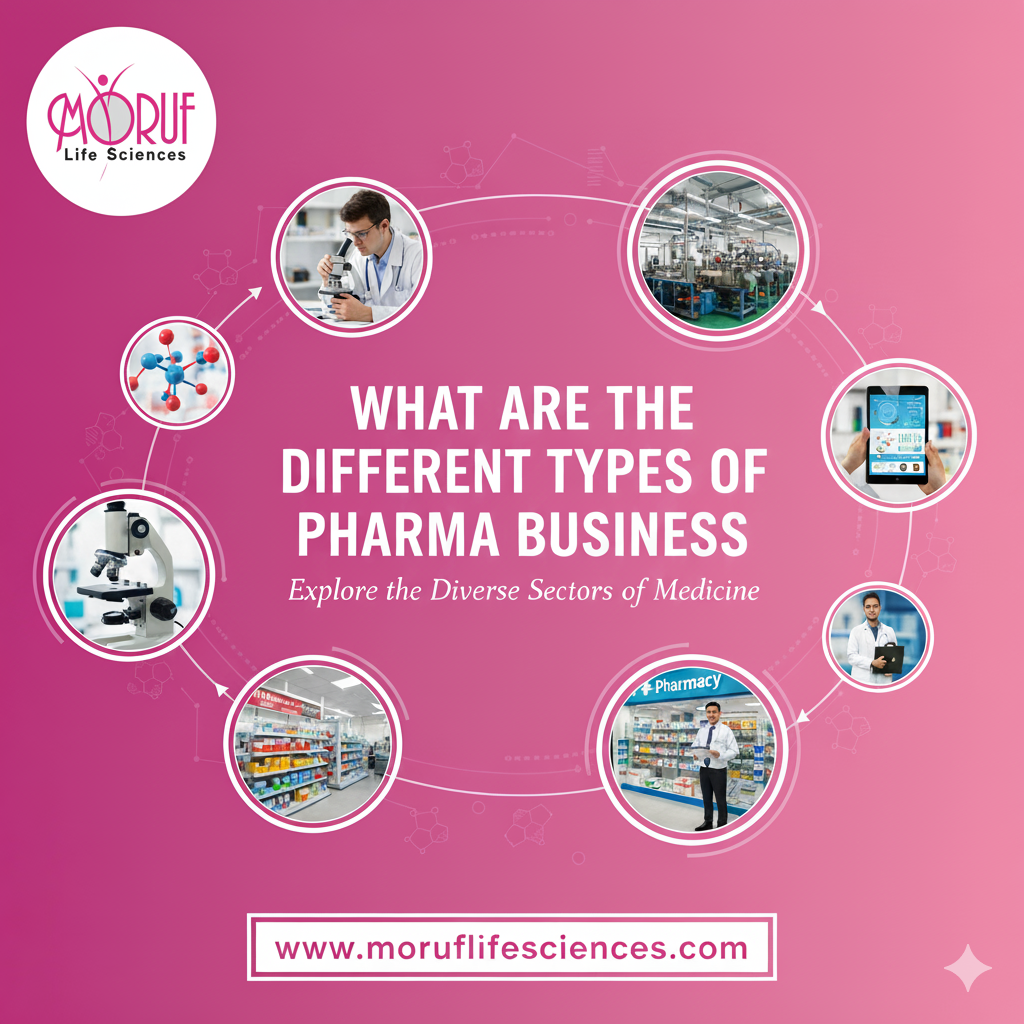-

-

call us
+91-9888163636



What Are The Different Types Of Pharma Business- The pharmaceutical industry encompasses a diverse ecosystem of business models, from innovative research companies developing breakthrough treatments to generic manufacturers ensuring medication accessibility. Understanding these different types of pharma businesses is essential for entrepreneurs, investors, and healthcare professionals navigating this complex industry landscape. The global pharmaceutical market continues experiencing robust growth driven by aging populations, rising chronic diseases, and expanding healthcare access in emerging economies.
Each pharma business type serves distinct purposes: innovator companies address unmet medical needs, generic manufacturers provide affordable alternatives, contract organizations offer specialized development services, and specialty pharma focuses on niche therapeutic areas. This diversification creates multiple entry points for businesses of varying scales while strengthening industry resilience.
As healthcare systems worldwide demand better outcomes at sustainable costs, understanding the strategic advantages and market opportunities of each pharma business model has become crucial for success in this billion-dollar industry. In this blog, Moruf Life Sciences will provide you with insights regarding what are the different types of pharma business.
The pharmaceutical sector comprises multiple specialized business models serving unique roles in healthcare. A comprehensive list of pharma business types helps entrepreneurs identify opportunities matching their capital and expertise, while enabling investors to assess risk and profitability. Understanding this landscape facilitates informed decisions, strategic partnerships, and reveals how each model contributes to accessible, affordable healthcare worldwide.
PCD (Propaganda Cum Distribution) Pharma Franchise is a business model where established pharmaceutical companies grant distribution and marketing rights to individuals or small businesses for specific territories. Franchisees promote and sell the company's products in their designated areas using provided promotional materials, earning profits through margin-based sales. This low-investment, high-return model has become popular among entrepreneurs seeking entry into the pharmaceutical sector with minimal risk and established brand support.
Key highlights include:
Third-party manufacturing enables pharma companies to outsource their production to established manufacturers who produce medicines under the client's brand name, allowing businesses to launch products without owning their own manufacturing facilities.
Key features include:
R&D pharmaceutical companies focus on discovering and developing innovative new drugs through extensive research, clinical trials, and regulatory approvals. These innovator firms invest billions in creating breakthrough treatments for unmet medical needs, holding patents that provide market exclusivity. They represent the industry's most capital-intensive segment, requiring substantial investment but offering high returns through blockbuster medications.
Pharmaceutical distributors and wholesalers act as critical intermediaries between manufacturers and retailers, ensuring efficient supply chain management and timely delivery of medications. This business involves procuring medicines in bulk from manufacturers, maintaining proper storage facilities with temperature controls, and distributing products to hospitals, pharmacies, and healthcare institutions while managing inventory and logistics.
Key aspects include:
Contract Manufacturing Organizations provide end-to-end manufacturing services to pharmaceutical companies lacking production facilities or seeking to outsource operations, handling formulation development, bulk production, packaging, and quality control while ensuring regulatory compliance.
Key benefits include:
Contract Research Organizations offer specialized research and clinical trial services to pharmaceutical and biotech companies throughout the drug development process. CROs conduct preclinical studies, manage clinical trials, handle regulatory submissions, and provide data management expertise. This business model thrives on the industry's growing trend of outsourcing R&D activities to reduce costs and accelerate time-to-market for new medications.
OTC medicine manufacturers produce non-prescription medications for common ailments like colds, allergies, pain relief, and digestive issues that consumers can purchase without a doctor's prescription. OTC manufacturers benefit from lower regulatory barriers compared to prescription drugs while maintaining consistent demand through repeat purchases.
Key features include:
Pharmaceutical retail and pharmacy chains are the final touchpoint in the healthcare supply chain, directly dispensing prescription and OTC medications to consumers. These businesses require licensed pharmacists, proper storage facilities, and inventory management systems. Pharmacy chains benefit from bulk purchasing power, brand recognition, and diversified revenue through health products, consultations, and diagnostic services, making them essential for accessible community healthcare.
The pharmaceutical industry offers diverse business models, from high-investment R&D to accessible franchise opportunities, each serving crucial healthcare roles. Choosing the right type depends on your capital, expertise, and goals. Understanding these options empowers entrepreneurs to make informed decisions while contributing to accessible, affordable global healthcare.